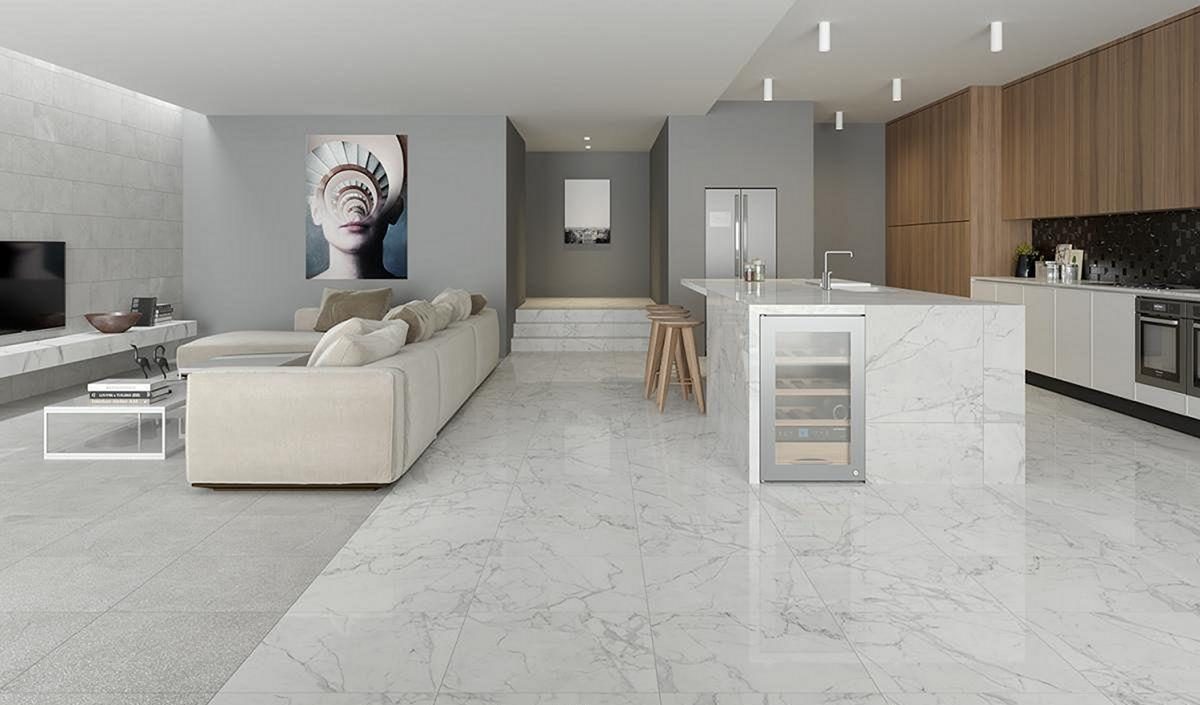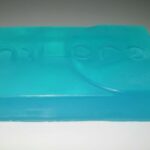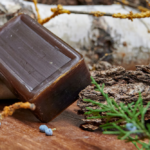Both indoors and outdoors, marble and travertine are becoming increasingly popular natural coverings. Price, resistance, installation, aesthetics: here is the match between these two quality materials.
- Marble and travertine: definitions and differences
- Resistance
- Maintenance
- Aesthetic
- Conclusion

What is marble?
What is the definition of travertine?
Why choose marble or travertine?
What is the difference between travertine and marble?
Does travertine fear Frost?
Marble or travertine on a terrace? In a bathroom?
Is marble more expensive than travertine?
Which travertine to choose? Which marble to choose?
| Type of tile | Types Price incl. VAT/m² |
| Travertine for interior tiling | from 20 to 40 €. |
| Travertine for outdoor tiling | from 25 to 80 €. |
| Classic white marble | from 40 to 100 €. |
| Genuine marble (Carrara/ Italian marbles) | from 80 to 200 €. |
| Pink marble (from Portugal) | from 20 to 50 €. |
| Black or Dark Marble | from 50 to 100 € |
| Laying travertine indoors (labor) | from 30 to 60 €. |
| Laying travertine outside | from 25 to 80 €. |
| Laying of marble tiles | from 40 to 70 € |
Marble and travertine: definitions and differences
What exactly is travertine?
Just like marble, travertine comes from limestone. A distinction is made between this type of lining (where the rock is produced in heated thermal water) and limestone tuff (produced in cold water).
The definition of marble concerns all types of rock derived from limestone and made up of calcite crystals. Veined, mottled, pink, white, dark… In all, there are more than 500 varieties of marble. However, travertine is not marble, but a more elementary, earlier form of this stone.
These materials share many advantages. Both are particularly durable, aesthetically pleasing, and offer a multitude of colors and finishes. They can also be installed indoors and outdoors and on different supports (walls, floors, work surfaces). Finally, both materials can be integrated into rooms such as kitchens and bathrooms.
The differences between marble and travertine are due to the composition of the latter.
More porous, travertine is more brittle, which allows a greater diversity of size of tiles. But it is also more sensitive to stains and requires maintenance precautions.
Marble is a harder material with a less porous surface. Its extraction is more complex, and its purchase price will be higher than that of travertine, especially for quality marbles.
Resistance
In terms of resistance, marble and travertine are both doing well. Placed in the rules of the art, these floor coverings will be there to last.
Particularly hard, marble displays excellent resistance to scratches and other aggressions. A certain weight, however, accompanies this resistance.
Travertine is also very resistant. The small natural cavities in its composition make it non-slip and therefore particularly suitable for outdoor floor coverings (terrace, pool coping, etc.). Besides, this material is UV and frost-resistant.
Please note, the level of resistance of both marbles and travertines depends on the level of quality. No need to worry about high-end Italian marble and travertine. More competitive in terms of prices, travertines from Turkey and Portuguese marbles will not have the same requirements.
Travertine
Advantages: Frost resistant, non-slip
Disadvantages: Must be treated against humidity, may darken on contact with pollution
Marble
Advantages: Extremely hard and scratch-resistant
Disadvantages: Heavy coating, does not adapt to all configurations
The best option: Travertine is better for the outside. Resistant and more comfortable to process, it fits perfectly on a terrace.
Maintenance
Both marble and travertine are porous materials. Resistant and chic, maintenance is one of the only points of vigilance for these materials. Golden rules exist to shine and avoid stains on your limestone coatings.
All abrasive household products must be excluded from the maintenance of marble and travertine. For the latter, household soap is perfect.
The maintenance of the marble can be more delicate at the beginning. Not all marbles react in the same way. To be sure you are applying the right product, ask the craftsman for advice or test on a tiny surface. Household soap, baking soda, and simple dishwashing liquid are generally suitable for cleaning.
Travertine
Advantages: Does not require regular treatment
Disadvantages: Does not support abrasive products
Marble
Advantages: The polished finish makes maintenance easier
Disadvantages: May react differently to cleaning products depending on the origin of the marble
The best option: Lay travertine in a polished finish. But beware of abrasive products!
Aesthetic
It is the strong point of limestone coatings of the marble and travertine type. Noble and shiny, they will immediately give a refined aesthetic to interiors and exteriors.
The multitude of effects, treatments, colors offered by marble makes it a solution of choice to decorate a living room, a bathroom, an entry. White, pink, blue, yellow, matt, or smooth marble, there are many decorative combinations!
In a glossy finish, the marble is particularly bright. Its “large format” tiles will enlarge the spaces.
The travertine is not to be outdone in its decorative aspect either. With it, you can also do on colors and finishes but especially formats: large tiles as atypical formats and small mosaic cabochons. Laying travertine is ideal for the interior decoration of water rooms!
Travertine
Advantages: Available in many formats
Disadvantages: May appear less noble than marble depending on the level of range
Marble
Advantages: A multitude of color choices
Disadvantages: The presence of scaffolding outside can be restrictive
The best option: It’s all a matter of taste… but marble undoubtedly is more suitable for the most sophisticated interiors.
Conclusion:
Coming from the same family, marble and travertine have important similarities. Both offer quality aesthetics and many decorative possibilities. They are also delicate to maintain.
Marble will be the best option for the tightest budgets and true lovers of stone floors. Laying a marble floor is also recommended for long-term investments in a property.
Travertine is generally more economical and adapts well to small rooms (bathroom) and exteriors. Be careful with the quality of the travertine; however, as some second choice coverings can see their durability decreases dramatically over time.
Anyway, before choosing, ask advice from a specialized craftsman. The installation of this type of coating does not allow any amateurism. Entrust it to a professional!
If you want to see more useful information about different categories, please visit our website.











